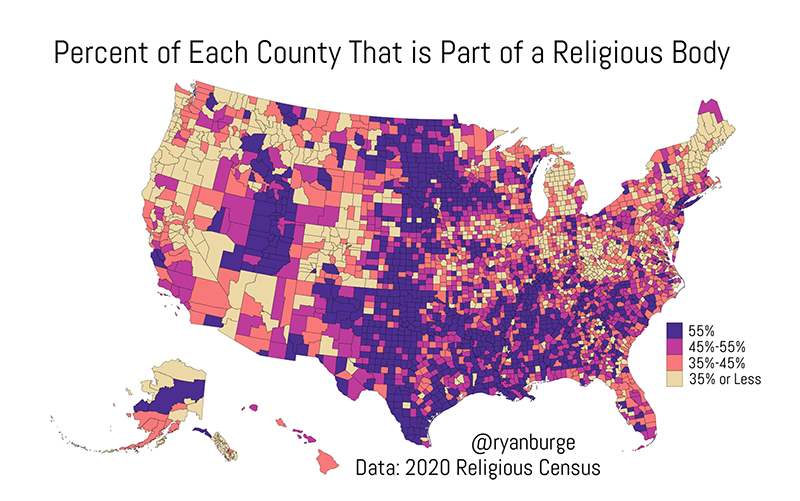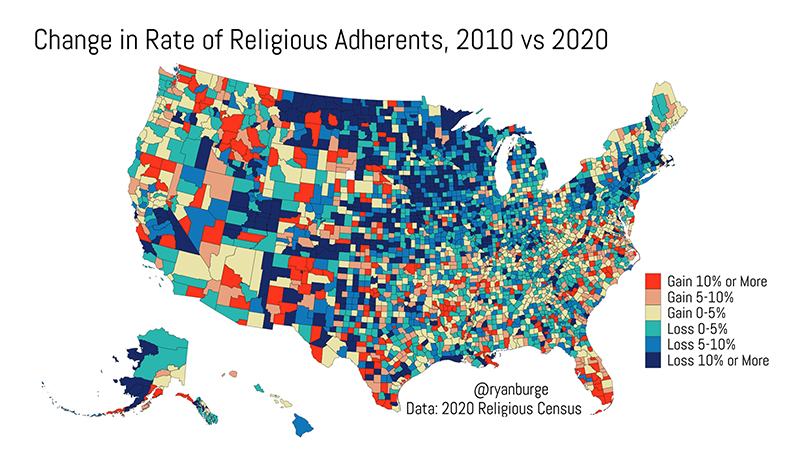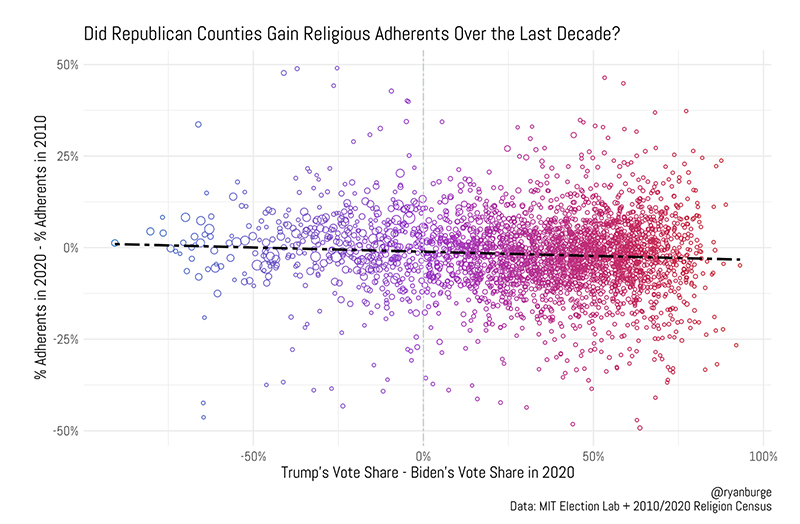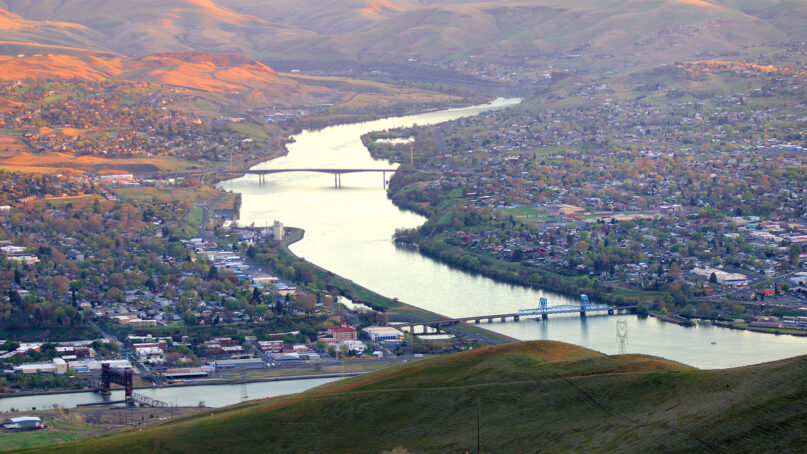(RNS) — One of the most fascinating aspects of American religion is the peculiarity of its distribution across the United States. We know that large swaths of New England are dominated by mainline Protestants and white Catholics, while parts of South Florida have large Jewish enclaves, and Utah is the base for the Church of Jesus Christ of Latter-day Saints.
Seeing these geographic affiliations up close, however, means looking at religious populations at the county level, which is notoriously difficult. Many local religious bodies do not keep accurate membership rolls, and among the influential non-denominational Christian congregations, there is by definition no central recordkeeping about weekly attendance or even the number of houses of worship.
To remedy that, the Association of Statisticians of American Religious Bodies conducts a decennial census with the aim of collecting information about the number of “congregations, members, adherents, and attendees” of as many religious groups as possible, including county data. This group has just released preliminary data from its collection efforts in 2020 and posted it in the Association of Religion Data Archives. Given that the Religion Census has been conducted for decades, it’s possible to measure religious change at the county level, too.

“Percent of Each County That is Part of a Religious Body” Graphic by Ryan Burge
The data solidifies what we know about American religion: Faith is particularly strong in what has traditionally been known as the Bible Belt. In many counties in states like Alabama, Mississippi, Louisiana and Texas, over half of the county-level population is aligned with a religious tradition.
That high level of religious adherence also extends northward through the Great Plains in states like Kansas, Nebraska and the Dakotas. Out West, meanwhile, counties in Washington and Oregon have fewer than 35% of their populations aligned with a faith tradition. The same trend is apparent in New England as well.
With the share of Americans with no religious affiliation rising dramatically over the last few years, it stands to reason that the Religion Census would also note this decline at the county level. What’s surprising is where the largest drops in religious adherence came from.

“Change in Rate of Religious Adherents, 2010 vs 2020” Graphic by Ryan Burge
Between 2010 and 2020, many counties across North and South Dakota, Minnesota, Iowa and Michigan saw drops in total religious adherents of at least 10%. That same decline appeared in Pennsylvania, New York and Massachusetts, as well.
However, South Florida and many of the least-populous counties in Texas close to the border with Mexico saw notable growth, as did parts of New Mexico and Arizona. Additionally, counties in Idaho became more religious in 2020 over 2010.
One obvious cause is the growing so-called God Gap — the expanding chasm between areas that vote Republican in high numbers and display a higher level of religious devotion and counties that favor Democrats and are frequently less religious. To test the strength of the God Gap, I created a scatter plot of the relationship between the vote share in the 2020 presidential election and the growth or decline in religion between 2010 and 2020.

“Did Republican Counties Gain Religious Adherents Over the Last Decade” Graphic by Ryan Burge
On the right side of the plot are counties where Trump got a larger share than Biden in 2020, while the left side are more Democratic-leaning counties. At the top of the graph are counties that added adherents between 2010 and 2020, while the bottom half are those counties where religious adherence dropped.
A simple linear model indicates that the relationship between these two variables is essentially non-existent. Counties that were more Trump-friendly actually seemed to lose religious adherents at slightly higher rates than predominantly Democratic counties, but the impact was so subtle as to not be statistically or substantively significant.
Obviously, religious change is tied up with a number of factors, including immigration, age, economics and fertility. Those are the types of puzzles that social sciences will try to piece together with this tremendous source of data over the next decade. With some solid theorizing and strong data analysis, the academic community will develop a clearer picture of the dynamics of the American religious landscape.

Ryan Burge. Courtesy photo
(Ryan Burge is an assistant professor of political science at Eastern Illinois University, a pastor in the American Baptist Church and author of “The Nones: Where They Came From, Who They Are, and Where They Are Going.” He can be reached on Twitter at @ryanburge. The views expressed in this commentary do not necessarily reflect those of Religion News Service.)
Ahead of the Trend is a collaborative effort between Religion News Service and the Association of Religion Data Archives made possible through the support of the John Templeton Foundation. See other Ahead of the Trend articles here.





